Free E-Mail
Bible Studies
Beginning the Journey (for new Christians). en Español
Old Testament
Abraham
Jacob
Moses
Joshua
Gideon
David, Life of
Elijah
Psalms
Solomon
Songs of Ascent (Ps 120-135)
Isaiah
Advent/Messianic Scriptures
Daniel
Rebuild & Renew: Post-Exilic Books
Gospels
Christmas Incarnation
(Mt, Lk)
Sermon on the Mount
(Mt 5-7)
Mark
Luke's
Gospel
John's Gospel
7 Last Words of Christ
Parables
Jesus and the Kingdom
Resurrection
Apostle Peter
Acts
The Early Church
(Acts 1-12)
Apostle Paul
(Acts 12-28)
Paul's Epistles
Christ Powered Life (Rom 5-8)
1 Corinthians
2 Corinthians
Galatians
Ephesians
Vision for Church
(Eph)
Philippians
Colossians,
Philemon
1
& 2 Thessalonians
1 & 2 Timothy,
Titus
General Epistles
Hebrews
James
1 Peter
2 Peter, Jude
1, 2, and 3 John
Revelation
Revelation
Conquering Lamb of Revelation
Topical
Glorious Kingdom, The
Grace
Great Prayers
Holy Spirit, Disciple's Guide
Humility
Lamb of God
Listening for God's Voice
Lord's Supper
Names of God
Names of Jesus
Christian Art
About Us
Podcasts
Contact Us
Dr. Wilson's Books
Donations
Watercolors
Sitemap
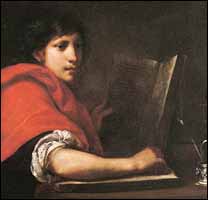 Detail from Francesco Furini, "St. John the Evangelist" (1630s), oil on canvas. Musée des Beaux-Arts, Lyon. Full image. |
For this study, I've decided to look at all the Epistles or Letters of John -- First, Second, and Third John. Of course, when you try to tackle more than one Bible book at a time, you have to look at the authorship, purpose, and situation for each of them separately. Fortunately, in the case of John's Letters, these elements seem to coincide, so we'll consider these issues together.
A. Authorship
The first question we'll tackle is who wrote these letters? The First Letter of John is anonymous. Second and Third John are written by an author who identifies himself as "the Elder."
External Evidence for John the Apostle as the author of these letters is quite strong. While there may be allusions to 1 John in 1 Clement and the Didache, the earliest clear reference comes from Polycarp of Smyrna (died c. 155 AD) who quoted directly from 1 John 4:2-3 and 2:24 (written perhaps 115 AD), though without reference to the author.
But there are specific references to the Apostle John's authorship by Papias of Hierapolis (mid-second century),1 Irenaeus (lived about 130-200 AD),2 Clement of Alexandria (c. 150-215 AD),3 Tertullian (died about 220 AD),4 and Origen of Alexandria (died about 255 AD).5 In the Muratorian Canon (Rome, between 170 and 215 AD) letters are attributed to John, while by the time of Eusebius (about 325 AD), First John is listed among the "acknowledged books," while Second and Third John are listed among the "disputed books," but as "well-known and acknowledged by most."6
Internal Evidence for John the Apostle as the author of these letters is also strong. While I must refer you to the commentaries, which cover the arguments in detail, I believe that a very good case can be made that:
- A common author penned these letters.
- The same author wrote the Gospel of John.
- The author claims to be an eyewitness of the events of Jesus' life.
- The author writes with a self-conscious authority as might an apostle.
While 1 John is anonymous and not in letter format, it is clear that this is not just a theological treatise penned for a general audience, but is very personal. The author knows his readers, for he refers to them as "dear children" or "little children," as well as "beloved" or "dear friends."
I believe it is rather clear: These letters are written by the Apostle John.
B. The Ministry of the Apostle John
We first get to know John the Apostle when he was called with his brother James, both of whom Jesus nicknamed the "Sons of Thunder" (Mark 3:17). Their father was Zebedee. Their mother was probably Salome, who may have been Jesus' mother's sister (Matthew 27:56 with Mark 15:40; John 19:25). Thus, John may have been Jesus' cousin. He and his brother James were fishermen on the Sea of Galilee, working with their father. He was an "unschooled, ordinary" man (Acts 4:13). When Jesus called them, they followed immediately (Mark 1:19-20).
During Jesus' ministry, John isn't usually mentioned alone by name, but usually along with his brother James or with Peter. He was one of Jesus' inner circle -- Peter, James, and John -- and thus was present at the transfiguration, at the raising of Jairus' daughter, and in the Garden of Gethsemane.
Early in his discipleship, John seems to have struggled with pride, for Jesus rebukes him and his brother for seeking to sit on his right and left in the Kingdom (Mark 10:35-40), for trying to stop a man who is casting out demons in Jesus' name (Luke 9:49-50), and for wanting to call down fire upon a Samaritan village that didn't welcome Jesus (Luke 9:51-56). John's brother James was the first martyr among the apostles (Acts 12:2).
If John the Apostle is the author of the Gospel of John (as I believe he is), then he is probably "the disciple whom Jesus loved," a disciple particularly close to Jesus. He leaned on Jesus' breast at the Last Supper (John 13:23), was appointed to care for Jesus' mother at the cross (John 19:26-27), and recognized Jesus in the miraculous catch of fish (John 21:7). He may also have been the "other disciple" who knew the high priest (John 18:15-16), and also the one who ran with Peter to the empty tomb (John 20:3-9).
In the life of the early church, he is associated with Peter in healing the lame man at the temple (Acts 3:1-10), and appearing before the Sanhedrin for their bold teaching about Jesus and the resurrection (Acts 4:1-31). He is arrested, released by an angel, and later flogged with the other apostles (Acts 5:18-41). In Galatians 2:9, he is mentioned as a "pillar" of the Jerusalem church. But that's the last Bible reference to him.
However, early church history is pretty much agreed that John the Apostle lives and ministers in Asia Minor toward the end of his life. He is exiled to the island of Patmos (Revelation 1:9) during the persecution of Domitian (reigned 81 to 96 AD), specifically in Domitian's fourteenth year,7 that is, about 95 AD. Eusebius records a strong persecution by Domitian against Christians.8 St. Jerome (c. 347-420) writes that after this:
"[John] returned to Ephesus under [Emperor] Pertinax and continuing there until the time of the Emperor Trajan [reigned 98-117 AD], founded and built churches throughout all Asia, and, worn out by old age, died in the sixty-eighth year after our Lord's passion and was buried near the same city."9
Eusebius (263 -339 AD), citing the writings of Irenaeus and Clement of Alexandria, says:
"At that time, the apostle and evangelist John, the one whom Jesus loved, was still living in Asia, and governing the churches of that region, having returned after the death of Domitian from his exile on the island."10
This would put his death after 98 AD. His tomb is thought to be located at Selcuk, a small town about two miles northeast of Ephesus. He was apparently the only disciple of the original twelve who died of natural causes, as alluded to at the end of John's Gospel (21:23-23).
Stories from the Early Fathers that illustrate his character are found in Appendix 2. John's Opponents and Early Stories.
C. Provenance and Date
|
|
To whom was First John written? As we'll see in the letters themselves, John's recipients are probably not Palestinian Jews, but either converted Diaspora Jews living in Ephesus, and, more likely, Gentiles who had been converted from the polytheism that was rampant in Asia Minor.
If you believe that the book of Revelation was written by John the Apostle, as I do,11 you may find it interesting to map the churches that are addressed in Revelation chapters 2 and 3: Ephesus, Smyrna, Pergamum, Thyatira, Sardis, Philadelphia, and Laodicea. They constitute a sequential listing of towns and cities grouped around Ephesus, capital of the Roman province of Asia. It is likely that they constituted a circuit of churches to which John travelled and which he taught.
We know that the Christian population in Ephesus in the first century was significant -- so large in Paul's time that the silversmiths tried to run him out of town for hurting their idol-making business. In the first century there are no buildings large enough for regular church meetings. Paul secures use of a lecture hall in Ephesus for teaching purposes for a couple of years (Acts 19:9), but that is only temporary.
Rather, the church meets in homes, a whole network of house-churches in the city and surrounding area that, together, constitute the Church in Ephesus. These house-churches are probably led or supervised by elders. Scholars sometimes refer to these churches as the Johannine churches or the Johannine community -- that is, the churches that recognize John's authority and adhere to his apostolic teaching.
It is likely that First John is written to guide these house-churches in and around Ephesus perhaps 70 to 90 AD.12 Third John is written to Gaius and Second John to a nearby church, probably about the same period.
D. The Situation to Which the Letters Were Written
Though First John is clearly written to "dear friends" in Christ, it is not just a feel-good letter. It is written with the clear intent to both stop heretical teaching and strengthen his readers towards a faithful and fruitful discipleship of Jesus Christ.
Scholars have argued extensively about exactly who were the false teachers in the Johannine churches. An earlier generation saw them as Gnostics. But since full-blown Gnosticism doesn't take hold until perhaps a century later (from about 150 to 300 AD), it is more accurate to see this as incipient- or proto-Gnosticism.13
The problems in the Johannine churches appear to be two-fold: theological errors about Christology and problems of an ethical and practical nature. They deny that Jesus came in the flesh (1 John 2:22; 2 John 7).
This appears to be a form of Docetism. Docetists were influenced by a strong Greek dualism: flesh was bad, spirit was good. By this logic, someone who was in the flesh could not be divine. Since Christ was considered divine, then he only "seemed" or "appeared" to be in a human body.
This leads to ethical problems. They "claim to be without sin" (1 John 1:6, 8), yet live sinful lives (1 John 1:10). They claim to know him, but continue to live in sin (1 John 2:4), which is incompatible with being a Christian (1 John 3:6-8; 2:6, 15-16). This kind of false teaching and half-truth undermines the very foundations of the Christian faith. (For more, see Appendix 2. John's Opponents and Early Stories.)
E. Themes of First John
Of course, John's letters are not written just to refute heresy. They are written to encourage and strengthen the believers in a healthy spiritual life. The major themes seem to be:
- Fellowship with God (1 John 1:3, 7; 2:4, 13a, 13c-14a, 19; 3:1-2, 6; 4:7-8, 12-13; 5:19-20)
- Righteousness (1 John 1:5-17; 2:1, 8-11, 29; 3:4-10; 5:16-18)
- Forgiveness and cleansing (1 John 1:7, 9; 2:1-2, 12; 3:3-5; 4:10)
- Obedience (1 John 2:3-6, 17b; 3:24; 5:2-3)
- Love (1 John 2:7-11; 3:10b-23; 4:7-12, 19-21; 5:2)
- Overcoming (1 John 2:13b, 14b; 5:4)
- Relation to the world (1 John 2:15-17; 3:13; 4:5, 9, 17; 5:4)
- Antichrist (1 John 2:18-20; 4:3)
- Holy Spirit (1 John 2:20; 3:6, 24; 4:2, 4, 6, 13, 16b; 5:6-8; 10)
- Denying/acknowledging Jesus' incarnation (1 John 2:22-23, 27; 3:23; 4:2-3, 15; 5:1, 5, 10)
- The devil (1 John 3:8-10, 12; 4:4; 5:18)
- Spiritual birth (1 John 3:9; 5:1)
- Eternal life vs. eternal death (1 John 2:25; 3:14; 4:9; 5:11-13)
- Fear vs. assurance (1 John 4:17-18; 5:13-14)
- Remaining/abiding (1 John 2:24-28)
- Prayer (1 John 5:14-16)
F. Structure of the Letters
It is clear that 2 John and 3 John are in traditional epistle format, with an identification of the author, address, blessing, and conclusion with personal matters and greetings. (see Lesson 8.1).
However, 1 John is clearly different. Rather than an epistle, it seems to be a sermon or tract designed to instruct believers in the Johannine churches and help them to discern and refute the teachings of the adversaries.
Many, including me, have tried to outline 1 John. It doesn't work. Instead of our Western approach of linear logic, one point following another, leading relentlessly to a conclusion, John's style is markedly different. John tends to double back to themes he has introduced previously, either to reinforce them or to extend their teaching further. I liken it to a braid where strands weave in and out in a purposeful manner.
Marshall summarizes various attempts to outline John's thought and observes that no approach is free from difficulties. He concludes:
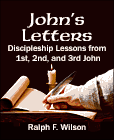 The study is available paperback, PDF and Kindle book formats. |
"It seems preferable to regard the Epistle as being composed of a series of connected paragraphs whose relation to one another is governed by association of ideas rather than by a logical plan. This does not mean that John is illogical, but rather that his Epistle is not meant to be divided into large sections on a logical basis."14
We've looked at some of the issues behind the writing of John's Letters. Now let's begin to study them in detail to learn what God will say to us through this old apostle of our Lord.
End Notes
[1] Eusebius, Church History, 3, 39, 17.
[2] Irenaeus (Against Heresies, 3, 16, 18) identifies John as both the "disciple of the Lord" and the author of the Fourth Gospel. And he quotes from both First and Second John.
[3] Clement of Alexandria is aware of more than one letter, since he refers to "the greater Epistle" and ascribes it to "the apostle John." He quotes first John extensively in Stromateis 2-5 and Quis Dives Salvetur? 37-38.
[4] Tertullian quotes from First John about fifty times.
[5] Origen also ascribes the First Epistle to John.
[6] Eusebius, Church History, 3, 25, 2-3.
[7] Jerome, De viris illustribus (On Illustrious Men), 9.
[8] Domitian was assassinated on September 18, 96 AD (Eusebius, Church History III, 18-20).
[9] Jerome, De viris illustribus (On Illustrious Men), 9.
[10] Eusebius, Church History, III, 23, 1-4.
[11] See my rationale for believing that the Apostle John was the author of the Book of Revelation in the Introduction to my Disciple Lessons from the Book of Revelation (JesusWalk Publications, 2003).
[12] Gary M. Bunge, "John, Letters of," DLNT, p. 595.
[13] David M. Scholer, "Gnosis, Gnosticism," DLNT, pp. 400-412.
[14] Marshall, Epistles of John, pp. 22-26.
Copyright © 2025, Ralph F. Wilson. <pastor![]() joyfulheart.com> All rights reserved. A single copy of this article is free. Do not put this on a website. See legal, copyright, and reprint information.
joyfulheart.com> All rights reserved. A single copy of this article is free. Do not put this on a website. See legal, copyright, and reprint information.
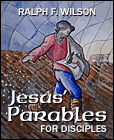 |
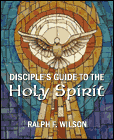
|
In-depth Bible study books
You can purchase one of Dr. Wilson's complete Bible studies in PDF, Kindle, or paperback format -- currently 48 books in the JesusWalk Bible Study Series.
Old Testament
- Abraham, Faith of
- Jacob, Life of
- Moses the Reluctant Leader
- Joshua
- Gideon
- David, Life of
- Elijah
- Psalms
- Solomon
- Songs of Ascent (Psalms 120-134)
- Isaiah
- 28 Advent Scriptures (Messianic)
- Daniel
- Rebuild & Renew: Post-Exilic Books
Gospels
- Christmas Incarnation (Mt, Lk)
- Sermon on the Mount (Mt 5-7)
- Luke's Gospel
- John's Gospel
- Seven Last Words of Christ
- Parables
- Jesus and the Kingdom of God
- Resurrection and Easter Faith
- Apostle Peter
Acts
Pauline Epistles
- Romans 5-8 (Christ-Powered Life)
- 1 Corinthians
- 2 Corinthians
- Galatians
- Ephesians
- Philippians
- Colossians, Philemon
- 1 & 2 Thessalonians
- 1 &2 Timothy, Titus
General Epistles
Revelation
Topical

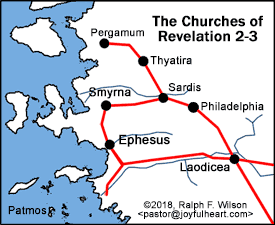
 To be notified about future articles, stories, and Bible studies, why don't you subscribe to our free newsletter, The Joyful Heart, by placing your e-mail address in the box below. We respect your
To be notified about future articles, stories, and Bible studies, why don't you subscribe to our free newsletter, The Joyful Heart, by placing your e-mail address in the box below. We respect your